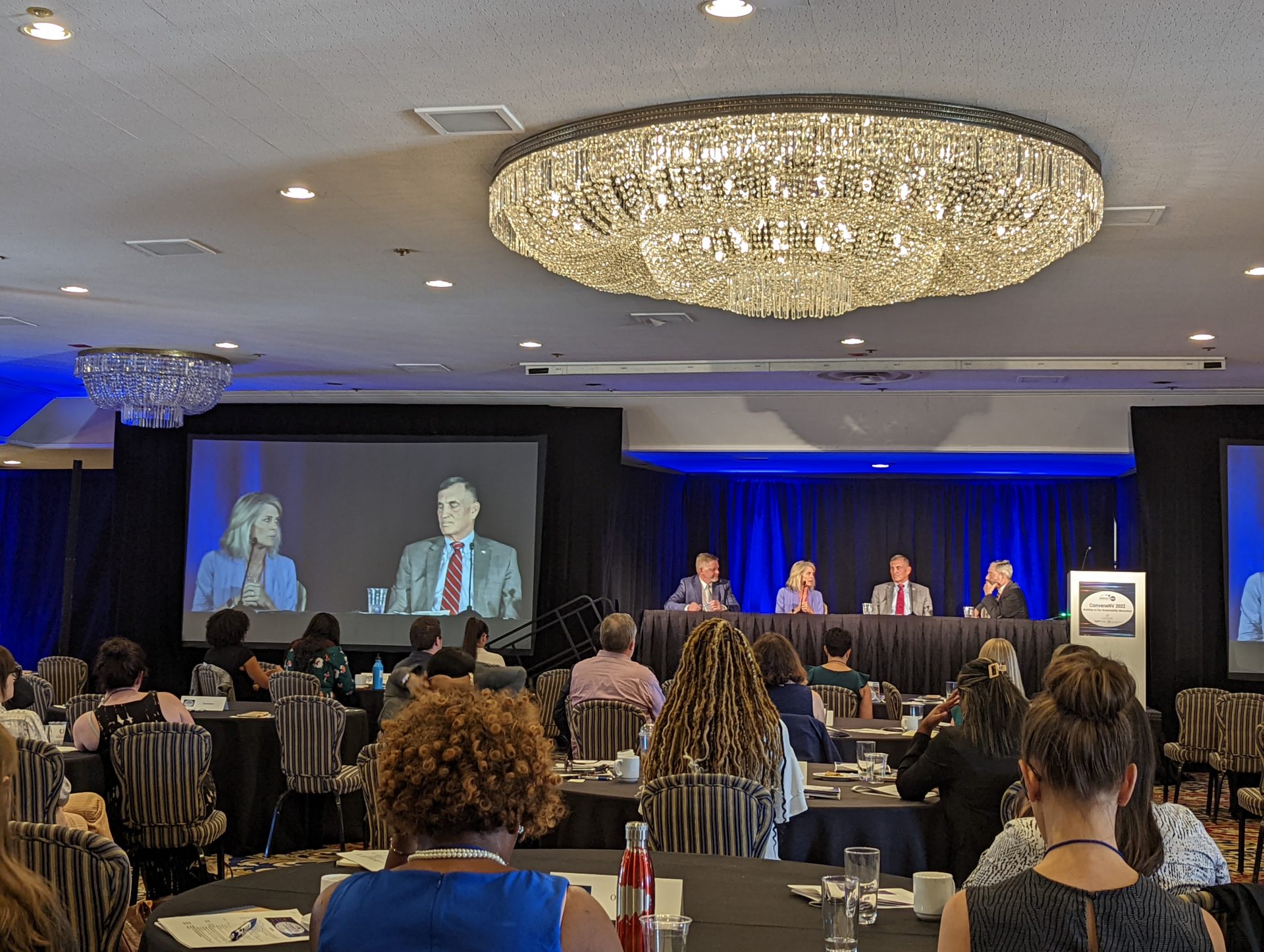LVGEA President & CEO Tina Quigley recently joined a panel discussion looking at the future of economic sustainability in Nevada as part of the ConveneNV 2022 conference hosted by ImpactNV.
Additional panelists included Mike Kazmierski, President & CEO of the Economic Development Authority of Western Nevada (EDAWN), and Bob Potts, Deputy Director of the Nevada Governor’s Office of Economic Development (GOED). The panel was moderated by John Restrepo, Principal at RCG Economics.
The group began by discussing exactly what is meant by the terms ‘economic diversification’ and ‘economic development’ and how they’re related. Economic diversification means bringing in more of what are called ‘primary’ industries, or businesses that sell goods outside the area, thereby importing money to the community, says Quigley. And while economic development can mean different things to different people, at its core, it means growing the region’s economy by bringing in high-quality jobs.
So, how do Northern and Southern Nevada differ in their economic development strategies?
“Nevada is a diverse state,” said Potts, with GOED. “Each county has unique characteristics. Some have mining, some have agriculture, some have gaming. It’s our job as a state agency to empower each individual economic development authority to be the boots on the ground and to know what their region needs.”
Quigley pointed to a recent Brookings Mountain West report that shows there are really “Three Nevadas” – Central Great Basin, Reno-Carson City, and Southern Nevada, with each region being geographically isolated from the others.
“Southern Nevada is more aligned with southern California and Phoenix than we are with Reno,” says Quigley. “Our geographical assets and workforce are very different than Northern Nevada. We have access to different ports, and we’re going after different types of markets.”
Nevada is considered one of the most business-friendly states in the West, with low taxes and relatively few business regulations. If that’s the case, then “Why does Nevada need to offer tax abatements to encourage companies to move here?” Restrepo asked.
“I think there’s some confusion about tax abatements versus tax credits,” said Quigley. “We’re not giving companies tax credits. Instead, we offer to temporarily lift a portion of their tax burden to assist them in moving here. If that company chooses to locate elsewhere, then we don’t get any of that tax revenue at all.”
“38 other states don’t tax manufacturing equipment, and we do,” mentioned Kazmierski with EDAWN. “If we don’t provide abatements, they won’t even consider us.”
Potts, with GOED, added, “The return on investment for abatements is about $250 to every $1 abated. We come out ahead by abating taxes.”
Even with Nevada’s business-friendly climate and tax incentives, not all companies who consider moving to Nevada end up here.
“Recently, we’re losing companies for two reasons,” said Kazmierski with EDAWN. “Number one is housing affordability. I don’t think anyone realizes how big the problem is. Number two, is workforce attraction and the lack of quality education in our state.”
In Southern Nevada, the main challenges facing economic development in the region are land and water. Quigley pointed to a recent study that shows the region only has about 8 years left of land supply. At the same time, the Southern Nevada Water Authority is predicting it’ll have to dip into its water reserves in about five years.
“Our regional Comprehensive Economic Development Strategy doesn’t thoroughly address those issues,” said Quigley. “But they are impacting the companies we’re looking to bring to the region. If a company is a large water user, we may not encourage them to move here. That’s a concern, and it does change our overall strategy.”
Statewide, another challenge is a shrinking workforce pool. Potts, with GOED, pointed to our low labor force participation rate, which at below 60% makes Nevada one of the lowest states. He says shifting the state’s focus to automation will be key.
“There is talk of a ‘sansdemic’, or not having enough workers,” said Potts. “Part of it has to do with childcare issues, and an overall low birth rate. But a lot of baby boomers also saw this as a chance to exit, so we have more baby boomers going out than Gen Z’ers coming in. We need to be a region that drives technology and automation innovation. Regions who do that will be the winners.”
As international issues, including war in the Ukraine, supply chain shortages, and inflation, continue to impact global markets, the panelists were asked what the impact will be in Nevada.
“These external events are always going to happen,” said Quigley. “What we need to do is have a strong strategic community plan to diversify and grow our economy. If you have that plan, and continue to move in that direction, even if there are external events happening, we’ll stay focused on the end goal.”
Bob Potts, with GOED, cautioned that recent events could bring about another downturn, but there is still a lot of opportunity for economic diversification. “New job numbers just came out and while we’re still down about 34,000 leisure jobs, we’re up 20,000 transportation and warehouse jobs. So, the pie slices are changing, and there are some great opportunities ahead.”






